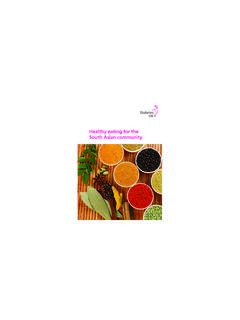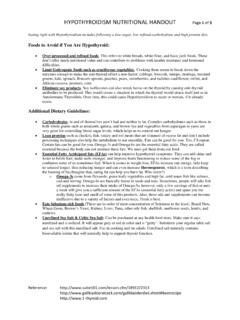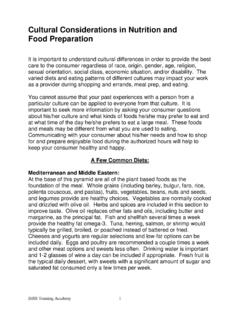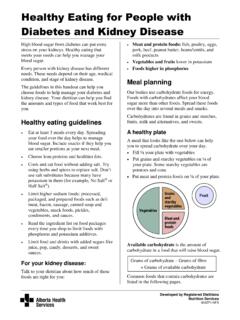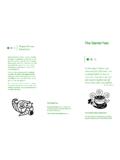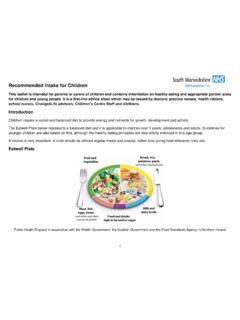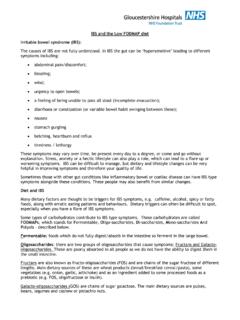Transcription of Guidelines for measuring household and individual dietary ...
1 Guidelines for measuring household and individual dietary diversity COVER PHOTOGRAPHS: FAO/K. Pratt FAO/Dan White FAO/Florita Botts woodleywonderworks PHOTOGRAPHS INSIDE: Stockphoto/Lamprini Kliafa Stockphoto/Flora Bulacan Stockphoto/Claudio Salvalaio Guidelines for measuring household and individual dietary Diversity Prepared by Gina Kennedy, Terri Ballard and MarieClaude Dop Nutrition and Consumer Protection Division, Food and Agriculture Organization of the United Nations This publication was produced with support from the European Union, through the EC-FAO. Linking Information and Decision Making to Improve Food Security Programme. Reprint 2013. The designations employed and the presentation of material in this information product do not imply the expression of any opinion whatsoever on the part of the Food and Agriculture Organization of the United Nations (FAO) concerning the legal or development status of any country, territory, city or area or of its authorities, or concerning the delimitation of its frontiers or boundaries.
2 The mention of specific companies or products of manufacturers, whether or not these have been patented, does not imply that these have been endorsed or recommended by FAO in preference to others of a similar nature that are not mentioned. The views expressed in this information product are those of the author(s) and do not necessarily reflect the views of FAO. ISBN 978-92-5-106749-9. All rights reserved. FAO encourages reproduction and dissemination of material in this information product. Non-commercial uses will be authorized free of charge, upon request. Reproduction for resale or other commercial purposes, including educational purposes, may incur fees. Applications for permission to reproduce or disseminate FAO copyright materials, and all queries concerning rights and licences, should be addressed by e-mail to or to the Chief, Publishing Policy and Support Branch, Office of Knowledge Exchange, Research and Extension, FAO, Viale delle Terme di Caracalla, 00153 Rome, Italy.
3 FAO 2010. Table of Contents Page Introduction 5. Description of the questionnaire 7. Differences between household and individual levels 9. Additional considerations 10. When to measure dietary diversity 13. Activities to undertake before beginning data collection 15. Translation and adaptation steps 15. Technical issues to discuss prior to beginning data collection 17. Training survey interviewers 19. Instructions for administering the questionnaire 21. Analyzing dietary diversity data 23. The dietary diversity scores 23. How to create dietary diversity scores 25. Using and interpreting HDDS and WDDS 26. Creating indicators of special interest from specific food groups 27. Assessing dietary patterns at different levels of dietary diversity scores 28.
4 Conclusions 31. Citations 33. Annex 1: Reference note on deriving indicators for iron intake 35. Annex 2: Guidance on assigning individual foods to food groups 37. Annex 3: Example of a completed questionnaire 51. 3. 1. Introduction Obtaining detailed data on household food access or individual dietary intake can be time consuming and expensive, and requires a high level of technical skill both in data collection and analysis. dietary diversity is a qualitative measure of food consumption that reflects household access to a variety of foods, and is also a proxy for nutrient adequacy of the diet of individuals . The dietary diversity questionnaire represents a rapid, user-friendly and easily administered low-cost assessment tool.
5 Scoring and analysis of the information collected with the questionnaire is straightforward. The dietary diversity scores described in these Guidelines consist of a simple count of food groups that a household or an individual has consumed over the preceding 24 hours. The Guidelines describe the use of the dietary diversity questionnaire at both the household and individual level, for which calculation of the score is slightly different in each case. The data collected can also be analyzed to provide information on specific food groups of interest. The household dietary diversity score (HDDS) is meant to reflect, in a snapshot form, the economic ability of a household to access a variety of foods. Studies have shown that an increase in dietary diversity is associated with socio-economic status and household food security ( household energy availability) (Hoddinot and Yohannes, 2002; Hatloy et al.)
6 , 2000). individual dietary diversity scores aim to reflect nutrient adequacy. Studies in different age groups have shown that an increase in individual dietary diversity score is related to increased nutrient adequacy of the diet. dietary diversity scores have been validated for several age/sex groups as proxy measures for macro and/. or micronutrient adequacy of the diet. Scores have been positively correlated with adequate micronutrient density of complementary foods for infants and young children (FANTA, 2006), and macronutrient and micronutrient adequacy of the diet for non breast-fed children (Hatloy et al., 1998; Ruel et al., 2004; Steyn et al., 2006; Kennedy et al., 2007), adolescents (Mirmiran et al.
7 , 2004) and adults (Ogle et al., 2001; Foote et al., 2004; Arimond et al., 2010). Some of these validation studies refer to only one country while others have attempted to validate dietary diversity scores for several countries. Nevertheless, research is ongoing and there is currently no international consensus on which food groups to include in the scores at the individual level for different age/sex groups. The rationale for these Guidelines is to provide a standardized questionnaire of universal applicability from which various dietary diversity scores can be calculated. As such it is not culture, population, or location specific and therefore, prior to using it in the field, it will be necessary to adapt it to the local context.
8 5. Guidelines for measuring household and individual dietary Diversity This is a revised version of the Guidelines for measuring dietary diversity. The main changes in this version are i) the proposal for a new individual dietary diversity score based on results of the Women's dietary Diversity Project (Arimond et al., 2010). and ii) an annex on classifying food items into food groups. Guidance is provided on how to calculate the HDDS and the Women's dietary Diversity Score (WDDS), but users can also calculate scores obtained from the standardized questionnaire for individuals from other age/sex groups according to the needs of the study. The Guidelines describe how to adapt and use the dietary diversity questionnaire, how to calculate each of the scores and how to create other indicators of interest from dietary diversity data.
9 6. 2. Description of the questionnaire The questionnaire can be used at the household or individual level according to the purpose of the survey. It has been adapted for ease of data collection from the FANTA. household dietary Diversity Score Indicator Guide (Swindale and Bilinsky, 2006). dietary Diversity Questionnaire Please describe the foods ( meals and snacks) that you ate or drank yesterday during the day and night, whether at home or outside the home. Start with the first food or drink of the morning. Write down all foods and drinks mentioned. When composite dishes are mentioned, ask for the list of ingredients. When the respondent has finished, probe for meals and snacks not mentioned. Breakfast Snack Lunch Snack Dinner Snack [Households: include foods eaten by any member of the household , and exclude foods purchased and eaten outside the home].
10 When the respondent recall is complete, fill in the food groups based on the information recorded above. For any food groups not mentioned, ask the respondent if a food item from this group was consumed. 7. Guidelines for measuring household and individual dietary Diversity Question YES=1. number Food group Examples NO=0. 1 CEREALS corn/maize, rice, wheat, sorghum, millet or any other grains or foods made from these ( bread, noodles, porridge or other grain products) + insert local foods ugali, nshima, porridge or paste 2 WHITE ROOTS white potatoes, white yam, white cassava, AND TUBERS or other foods made from roots 3 VITAMIN A RICH pumpkin, carrot, squash, or sweet potato VEGETABLES that are orange inside + other locally AND TUBERS available vitamin A rich vegetables ( red sweet pepper).










